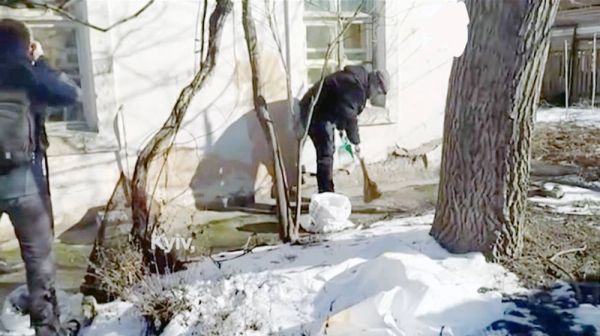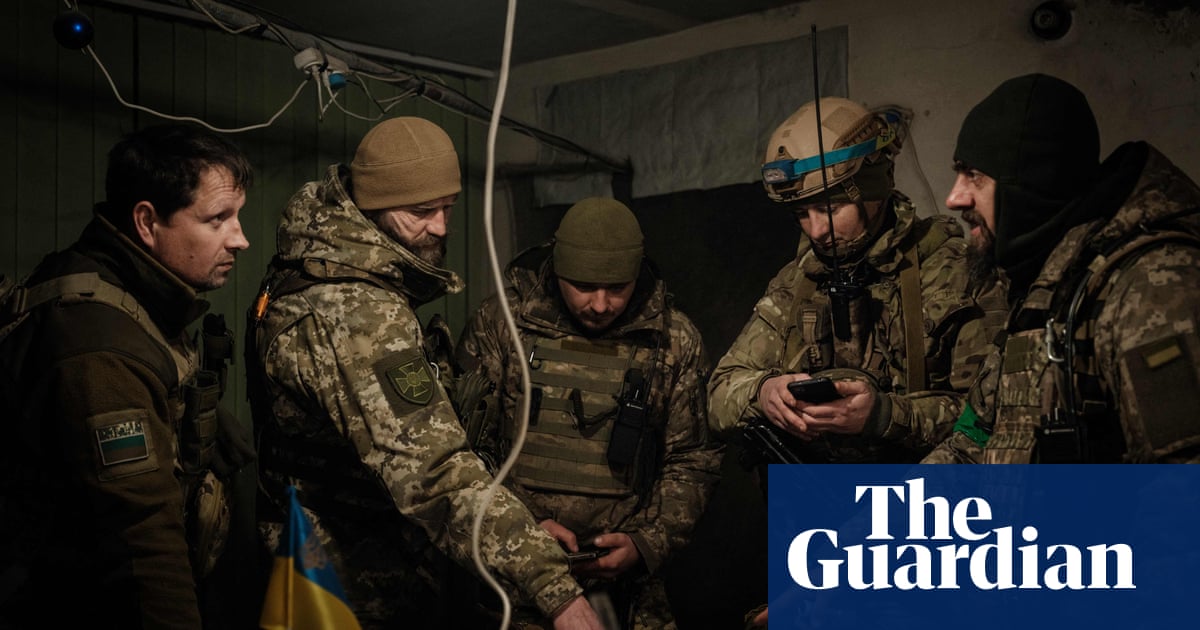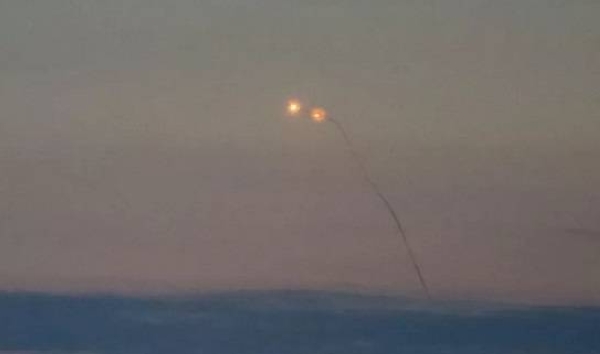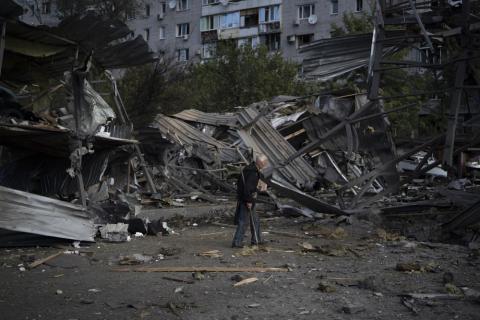
A huge missile and drone attack launched by Russia across Ukrainian territory has left at least seven people dead, including four children, officials have said.
Power cuts and water outages were reported in numerous parts of the country including in some districts of the capital, Kyiv, as a result of the strikes, which targeted mainly civilian energy infrastructure.
In a video address on Telegram, the Ukrainian president, Volodymyr Zelenskiy, described the attack early on Monday as “one of the biggest combined strikes” on Ukraine over the course of the war.
“And like most previous Russian strikes, this one is just as base, targeting critical civilian infrastructure,” he said.
The commander of the Ukrainian air force, Mykola Oleshchuk, said Russia launched 127 missiles, of which 102 were intercepted. He added that Russian forces had also launched 109 drones.
In central Kyiv, air defences were audible during morning rush-hour, forcing many people to take shelter in underground metro stations. In the western city of Lutsk, a block of flats was damaged and there were reports of fatalities in five regions.
The prime minister, Denys Shmyhal, said 15 regions had sustained damage during the strikes, and Zelenskiy said the energy sector had suffered “a lot of damage”.
A senior Ukrainian official said Russia had also targeted a hydropower plant in the Kyiv region. “Today’s Russian attack … targeted Ukraine’s civilian infrastructure, including Kyiv HPP,” the Ukrainian first deputy foreign minister, Andriy Sybiha, said on X.
Russia’s defence ministry in a statement said it had launched a “massive precision-guided weapons strike on critical energy infrastructure facilities”.
Moscow has been targeting this infrastructure for months, leading to blackouts, rationing and a fear of power shortages over the coming winter.
The attack came two days after Ukraine celebrated its Independence Day. The US embassy in the country had warned of an elevated risk of a Russian attack around the date.
Zelenskiy responded to the attack with a familiar call to western allies to provide more by way of air defence support for Kyiv, and to lift restrictions on using western weapons to strike deep into Russian territory.
“We could do much more to protect lives if the aviation of our European neighbours worked together with our F-16s and together with our air defence,” he said.
In recent weeks, Kyiv’s surprise incursion into Russia’s Kursk region has changed the mood and dynamic in the conflict, although it remains unclear what Kyiv’s long-term plan for the area of Russian territory it controls is.
The Kremlin’s spokesperson, Dmitry Peskov, told reporters that Russia would make “an appropriate response” to the incursion. He also dismissed increasing chatter that some form of negotiations between Moscow and Kyiv may be on the cards in the near future.
“There are a lot of reports about various contacts in the media, and not all of them are correct … ” Peskov said. “The topic of negotiations at the moment has pretty much lost its relevance.”
Ukraine remains on the defensive in the east of the country, where Moscow is rapidly advancing toward the strategically important city of Pokrovsk. After a meeting with his senior commanders on Monday evening, Zelenskiy announced that he has ordered a “further strengthening” of defences in the direction of Pokrovsk.
Ukraine continues to deploy long-range drones to strike military facilities and oil refineries within Russia. Russia’s defence ministry said its air defence systems destroyed nine drones over the southern Saratov region, which lies 560 miles (900km) from the border with Ukraine.
Ukraine has made significant investments in drone technology, developing advanced attack drones capable of flying long distances and hitting targets deep inside Russian territory.
On Saturday, Zelenskiy touted a newly developed Ukrainian missile-drone, the Palianytsia, that he said was designed to strike Russian military airfields and “destroy the enemy’s offensive potential”.












